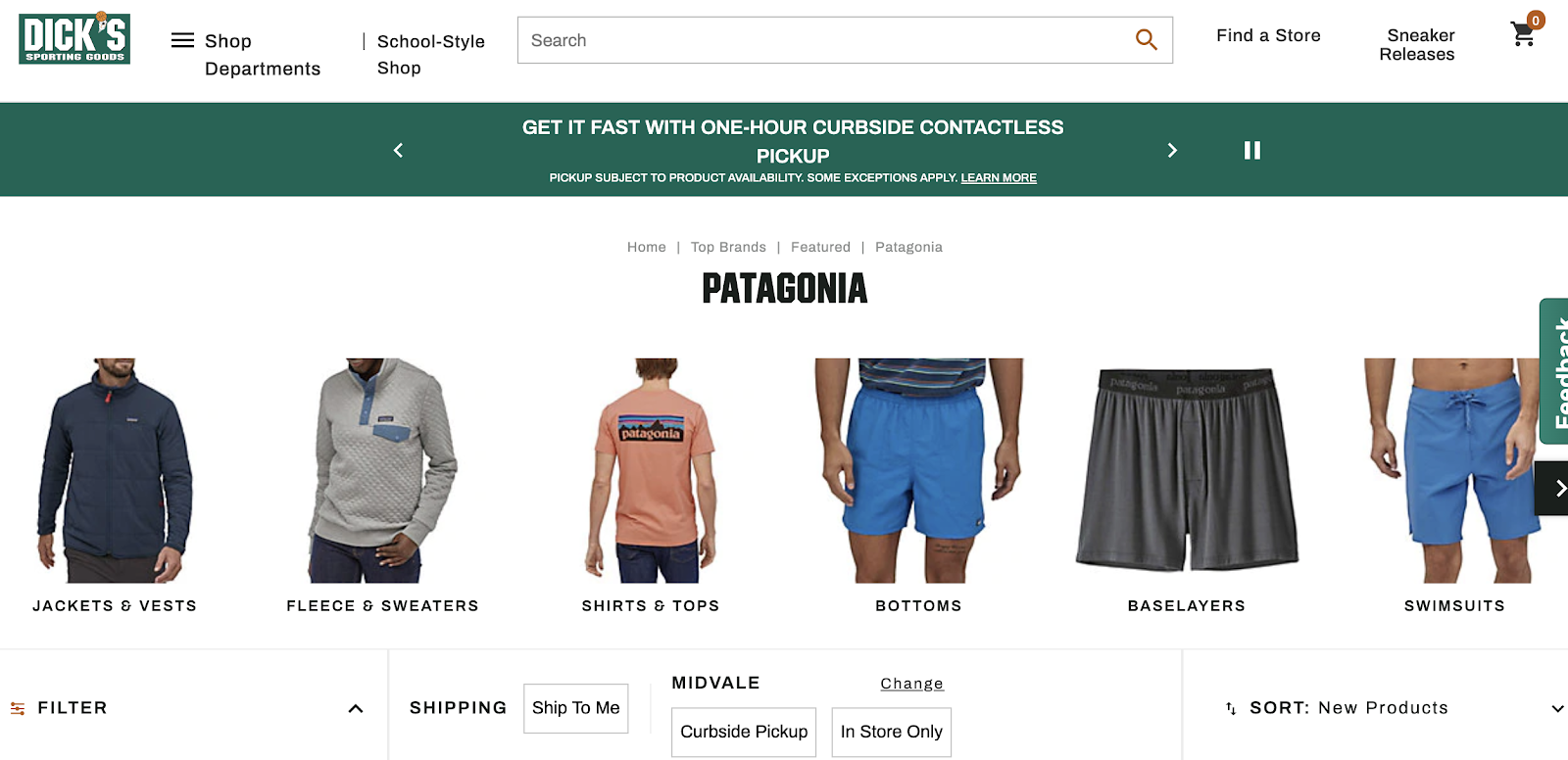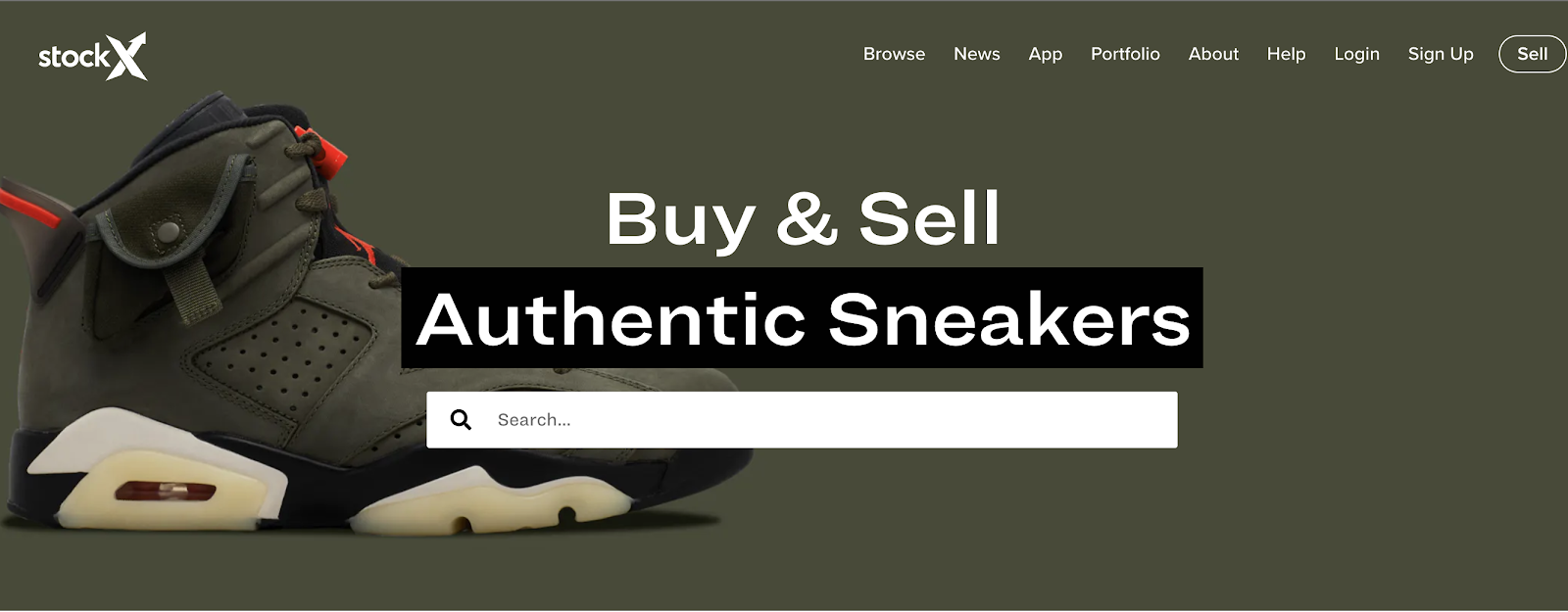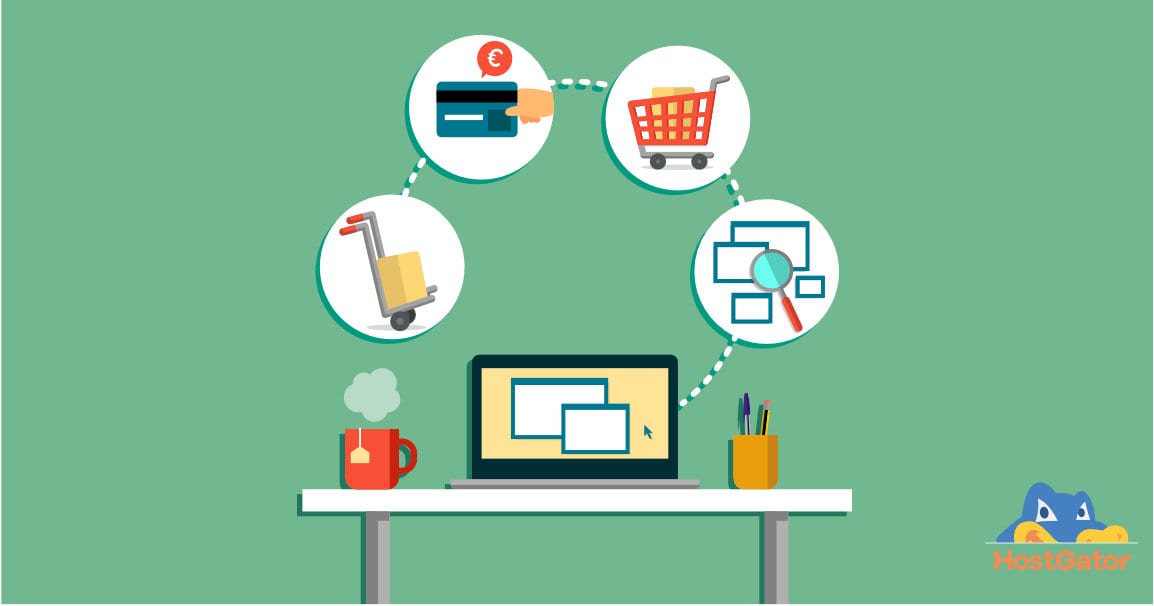You’ve probably already heard that the eCommerce industry is thriving right now.
It’s true! Experts predict that retail eCommerce will reach $4.13 trillion this year and that mobile commerce will take a 72.9% market share of eCommerce.
With trends of consumers buying online and via their mobile devices, there is no better time than now to start an eCommerce business.
While you may have intentions of getting your online store up and running, it doesn’t come without a learning curve. And, the best place to start with your research is to look into the different types of eCommerce business models and websites.
Once you know what business models are available, it will be easier to determine how you will run your online store, and how you will monetize your business. Let’s take a closer look at the different types of eCommerce business models.
What are the different types of eCommerce business models?
The first step in starting your online business is understanding the different eCommerce business models. Typically, eCommerce businesses fall into one of the following four categories.
Let’s take a closer look.
1. Business-to-business (B2B)
The business-to-business eCommerce model is structured just like it sounds. It’s where businesses sell products to other companies. Types of products include anything that enhances another company’s business practices.
One of the best examples of a B2B business is a software company. Think Salesforce, HubSpot, or SurveyMonkey. All of these products are for the benefit of a business, and it wouldn’t make sense for the typical mom-and-pop consumer to invest in enterprise software.
2. Business-to-consumer (B2C)
The business-to-consumer eCommerce model is also straightforward. It’s when a business sells products online, or via a mobile device, directly to consumers.
Business-to-consumer eCommerce companies are companies that you and I visit online every day to purchase things like clothing, books, makeup, etc.
Top B2C eCommerce companies include giants like Amazon, eBay, and Alibaba.
It’s also critical to remember that B2C companies don’t have to exist solely online like Amazon and eBay.
B2C companies can also have a brick-and-mortar store and, if it makes sense, can start an eCommerce website. Examples of this include large fashion retailers like Nordstrom, J. Crew, H&M, and more.
3. Consumer-to-consumer (C2C)
A consumer-to-consumer business model is when one consumer makes and sells a product to another consumer.
One consumer may use a platform like Amazon, Etsy, or eBay to sell products to another consumer.
With online eCommerce tools like WooCommerce, consumers can even set up a C2C store on their personal website.
4. Consumer-to-business (C2B)
The last type of eCommerce business model is consumer-to-business. This is where a consumer, or individual entrepreneur, sells their products or services to businesses.
Good examples of C2B businesses would be a business consultant, a freelance graphic designer, or a social media influencer with a large audience.
What are the different types of eCommerce websites?
No matter what type of eCommerce business model you choose, they all have one thing in common. All eCommerce stores run on the internet. This means you need a website.
Here are the different types of eCommerce websites to consider.
1. Single brand website
An individual brand website is a site that only sells the products or services of one business or person.
It’s also the most common type of website for people starting an eCommerce store, and probably the type of website you will start.
An example of a single brand website would be Patagonia.
If you go to the Patagonia website, you aren’t browsing every type of outdoor apparel. You will only find Patagonia products.

It doesn’t matter what eCommerce business model you have. If you only plan on selling your own products, you’ll want to build a vendor-specific website.
For example, if someone navigates to the B2B Salesforce website, they will only see Salesforce products.
Similarly, my business is a C2C business. I sell freelance writing guides and products to other freelance writers. I built a single brand website to suit my eCommerce needs.

2. Online retailers
The next type of eCommerce website is also common, especially for large retailers. Online retailers are bigger stores that typically wholesale other brand’s products.
For example, Dick’s Sporting Goods is a place where you can buy different types of sporting goods and outdoor apparel from different brands. Let’s stick with the Patagonia example, but apply it to an online retailer situation.
If I navigate to the Dick’s Sporting Goods website, I can set my filters to find Patagonia products. Dick’s Sporting Goods doesn’t make Patagonia products. The brand’s buyers purchase large quantities of Patagonia products directly from Patagonia and sell them at a higher retail price on the website.

You’ll also notice that Patagonia isn’t the only brand Dick’s Sporting Goods sells on its website. Consumers can also buy products from competing brands like Columbia, NorthFace, and Nike.
3. Affiliate websites
Retail isn’t the only way to make money with an eCommerce website where you sell other brand’s products. Another option is to set up an affiliate website.
An affiliate website is where someone sells other brand’s products on their website in exchange for a commission.
If you build a website and attract a large following, setting up an affiliate website is an awesome way to generate additional revenue.
4. Marketplaces
Another type of eCommerce website is a marketplace. A marketplace is a website where individual entrepreneurs can list their products for sale.
The most popular examples include Amazon and Etsy. Etsy and Amazon provide an online marketplace for vendors to list and sell their products.
While Etsy and Amazon are the largest online marketplaces, it doesn’t mean there isn’t room for smaller marketplaces, especially niche marketplaces.
StockX is an example of a smaller, niche marketplace for people to sell shoes.

If you have an idea for an online marketplace you know would be successful, there is no better time than now to get your website up and running.
How do you make money with an eCommerce website?
Since eCommerce is all about providing a product or service and making money, it’s important to understand different revenue models.
As you are setting up your new eCommerce website, you can choose one or more of these revenue streams. Here’s a quick rundown of various ways to make money with your eCommerce website:
- Dropshipping – Dropshipping is where you sell a product on your website for a commission, but all the shipping is handled by the brand.
- Affiliate marketing – Affiliate sales are when you sell someone else’s product on your website in exchange for a commission.
- Subscription – A subscription is when you offer to continue sending a product or offering a service in return for a monthly payment.
- Private labeling – Private labeling is when the brand makes, labels, and packages the products themselves.
- White labeling – White labeling is when someone purchases a product from a manufacturer and rebrands and repackages it.
There are other types of revenue models, but those five are among the most common for new retail brands.
Start Your eCommerce Website Today with Virtue Media!
eCommerce really is booming right now. People love the convenience and ease of shopping online. If you have a product or service you’ve been hoping to sell, it’s time to start moving forward.
If you’re looking for help with getting a website up and running, remember Virtue Media offers an eCommerce website builder, supports WordPress and WooCommerce, and more. Check out our hosting plans for more information.



![How to Create Your Freelance Brand [5-Step Guide]](https://mdvirtue.com/wp-content/uploads/2022/02/How-to-Create-Your-Freelance-Brand-5-Step-Guide-400x250.jpeg)
![How to Build a Coaching Website on WordPress [Expert Guide]](https://mdvirtue.com/wp-content/uploads/2022/02/How-to-Build-a-Coaching-Website-on-WordPress-Expert-Guide-400x250.jpeg)

0 Comments